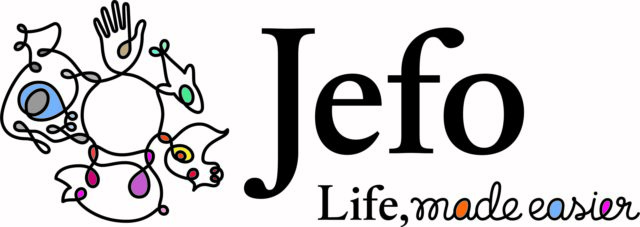My USDA official duty station is East Lansing, Michigan. I am here at the state Natural Resources Conservation Service (NRCS) office. The challenge is shifting my work towards domestic challenges from the efforts of international development. Not easy. My supervisor here has assigned me the task of evaluating CNMPs for certification.
CNMPs are comprehensive nutrient management plans, and from our NRCS perspective, they are a conservation plan for a landowner with livestock. As you know, I have been writing about landowners with livestock for 20 years in this column.
I began my academic extension career in the Willamette Valley in Oregon, working in a USDA service center and with my good friends in NRCS. I helped primarily dairy farmers with CNMP development and implementation.
In this column, I visit CNMP development and implementation one more time. I present three ideas for you to think about, as many readers of this column are in fact owners of such CNMPs and most of these are participating in a Federal Farm Bill Program, such as the Environmental Quality Incentive Program (EQIP).
1. My first suggested idea is simple. I believe software programs are driving CNMP development. That is, a suite of software programs are chosen and the CNMP is written by filling in the blanks. Generally, CNMP writers attend courses where training is based upon using these software programs, and if added to a collection of other components, they will complete the task of writing one of these documents.
While this approach has its merits, I am suggesting we instead train our CNMP writers using only three tools: a mechanical pencil, a paper tablet and a calculator. This may seem rather Luddite-like, but the essential components of the CNMP can be completed with these three tools; the output of writing a CNMP is the document itself but the outcome should be true understanding of how the numbers actually fit together.
The numbers, generally, are empirical measurements of the physical landscape. Just plugging numbers into a software program fails to capture the essence of what these numbers mean and how they are guide true understanding.
How often do we hear that a writer places data into a software program and, after some time of data entry, the software gives the answer? The writer often does not know how these numbers were mathematically analyzed to derive an answer and, therefore, has little understanding of what the result actually means.
My suggestion here is we deliver a training program that uses the simple tools – pen and paper – so that we deliver the outcome of understanding, instead of software output . Yes, after training, the CNMP writer may choose a software program to make better use of his or her time, much like the calculator does, completing the math for us quickly.
2. My second idea requires no software and no mathematics. My ideal CNMP consists of four sections. They are section two, production area; section three, land application area; and section four, supporting documents. Section one, however, is quite different. I do not see section one well written in CNMP development; maybe because there is no software available for it so writers do not know how to complete it.
Section one is the integration or synthesis of four necessary items. They are a summary description of the family farm and the farm family, the identified resource concerns, the documentation of a discussion with the landowner about how the resource concerns (soil, water or air, for instance) will be mitigated and a record of the landowner decisions as a schedule of implementation.
This fourth item, the schedule of implementation, is clearly the single-most important output of the CNMP. We should laminate the schedule and place it on the landowner’s office wall. It is, essentially, the decisions made by the landowner that will be implemented in the future. One or more decisions may qualify for an EQIP contract, or perhaps none of them will.
Please note here the first component, a summary of the family farm and farm family refers to the farm itself, the physical attributes of the production and land application areas, as well as the farm family, a description of the goals and objectives of the people on the farm. Obviously this is important because the writer must know something about the people involved in the future.
Is a son or daughter coming home from college to farm? Is there a new partner or spouse joining the farm family? Couple this with the farm’s physical attributes … is the herd size increasing, are new buildings planned, or is the landowner retiring and thus chooses little or no new capital investment?
Part section one is identified resource concerns and these require boots-on-the-ground evaluation, along with measurements that can derive an output of a particular resource parameter. For instance, on the production area, a flow path of polluted runoff moves towards surface water.
On the land application area, soil loss due to water erosion moves sediments into surface water or improper application of nitrogen results in nitrate leaching below the crop root zone. We may use a transport model as well, such as a phosphorus index, to screen certain fields and management practices, thereby offering the landowner a suite of options for mitigating a resource concern.
The point is: Here in section one, the inventory and evaluation of the production area and the land application area, combined with the goals and objectives of the farm family, are essential to mitigate the evaluated resource concerns. These must be spelled out in detail in the CNMP.
In fact, section one is really all that is needed. My premise is the other sections are just documenting the inventory and evaluation effort. A reader may pick up the CNMP and not ever have visited the farm or met the landowner. But if written correctly, the reader should understand the family farm and the farm family, their resource concerns and how they will be mitigated all by reading section one.
Before we leave this second idea, here is something else to think about. If I were writing CNMPs, I would not be so particular about having the exact inventory numbers and using the exact software program … what I would seek above all is a change in human behavior. Now this may seem odd but I submit that, really, what counts is the landowner adopting a new ethos that is built upon an awareness of resource concerns and the willingness to mitigate them.
The landowner would understand that record-keeping is an investment, not a cost, and in fact eagerly keeps them so he or she can make better decisions. If the CNMP is anything, then let it be the notebook of papers that stirs the landowner to action … action that is manifest in the schedule of implementation. But let’s add something else.
3. My third idea is one many of us have been thinking about for many years. Let’s think about the CNMP as a performance document that is built to address the three E’s: efficiency, economics and the environment.
Every landowner seeks increased efficiency on the farm. Every landowner evaluates nearly every decision through the lens of economics: What is the cost and what is the return on investment? And every landowner understands that resources are not restricted to the farm boundaries … it is in the public good that resources are managed properly.
I am suggesting we need a new model for answering the question: Why write a CNMP? If the CNMP-writing community were to base the answer on a performance document, one that helps the landowner improve efficiency, increase economics (profit or return on investment) and enhance the environmental resources on the farm, then we would be very busy indeed.
I am all about delivering a product to the landowner that is useful. This core value carries a fiduciary requirement as well. Our taxpayer dollars should be spent on delivery of a CNMP that is useful and is a starting point for the future changes made by the landowner and his or her family.
The CNMP is not a document used solely for entry into EQIP. The CNMP is a performance document that contains decisions made by the landowner to manage the farm more efficiently, more economically and with an environmental ethos that assures the general public that the farm family and has the very best science-based knowledge to operate, manage and maintain the farm.
I do not have the authority to shift anyone towards one or more of these three ideas. But I have been in this business for more than 20 years, and I simply submit to you that I know we can do better than our current status today. Most CNMP writers rely too heavily upon software, place too little emphasis on the four items in section one and lack the ability to write performance-based CNMPs. I know there are exceptions, but they are rare.
The real authority is with landowners. You might begin by asking your CNMP provider to think differently about CNMP development. And that what really counts is not the CNMP notebook but the change in human behavior afterwards. If we can do this, then the CNMP emphasis shifts to the implementation, the operation, management and maintenance of the farm.
Or written this way, the numbers in a CNMP are nearly all estimates. If the landowner has a performance document to work from and if future implementation becomes the centerpiece of the farm, the empirical records will document performance. PD
Gangwer writes a column in each issue of Progressive Dairyman’s Northwest and Southwest regional inserts. He has contributed commentary to the magazine for more than two decades. Click here to read his past columns.





